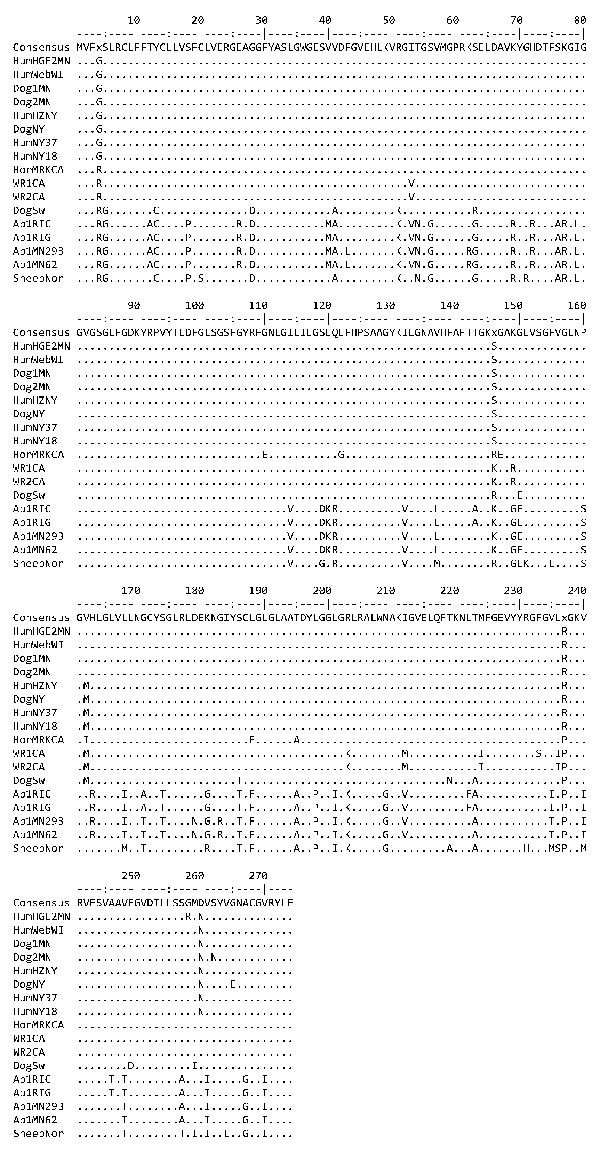Volume 15, Number 6—June 2009
Dispatch
Diversity of Anaplasma phagocytophilum Strains, USA
Figure 1

Figure 1. Diversity in the amino acid sequences encoded by p44ESup1/omp-1n in US and European strains of Anaplasma phagocytophilum. All strains are from the United States (the state is indicated in the strain designation) except for the strain from the sheep from Norway (SheepNor) and the dog from Sweden (DogSw). Human-origin strains are HZNY, NY18, NY37, WebWI, and HGE2MN; dog strains are Dog1MN, Dog2MN, and DogNY; wood rat (Neotoma fuscipes) strains are WR1CA and WR2CA; the horse strain is HorMRKCA; Ap-V1 strains are Ap1RIC (culture derived), Ap1RIG (isolated from an infected goat), Ap1MN29B, and Ap1MN62 (both Ap1MN strains were derived from naturally infected Ixodes scapularis ticks). Sequences were from either this study or GenBank: accession nos. DQ519565 (SheepNor), DQ519566 (DogSw), CP000235 (HZ), AY164490 (NY18), AY137510 (NY37), AY164491 (Webster), and AY164492 (HGE2).